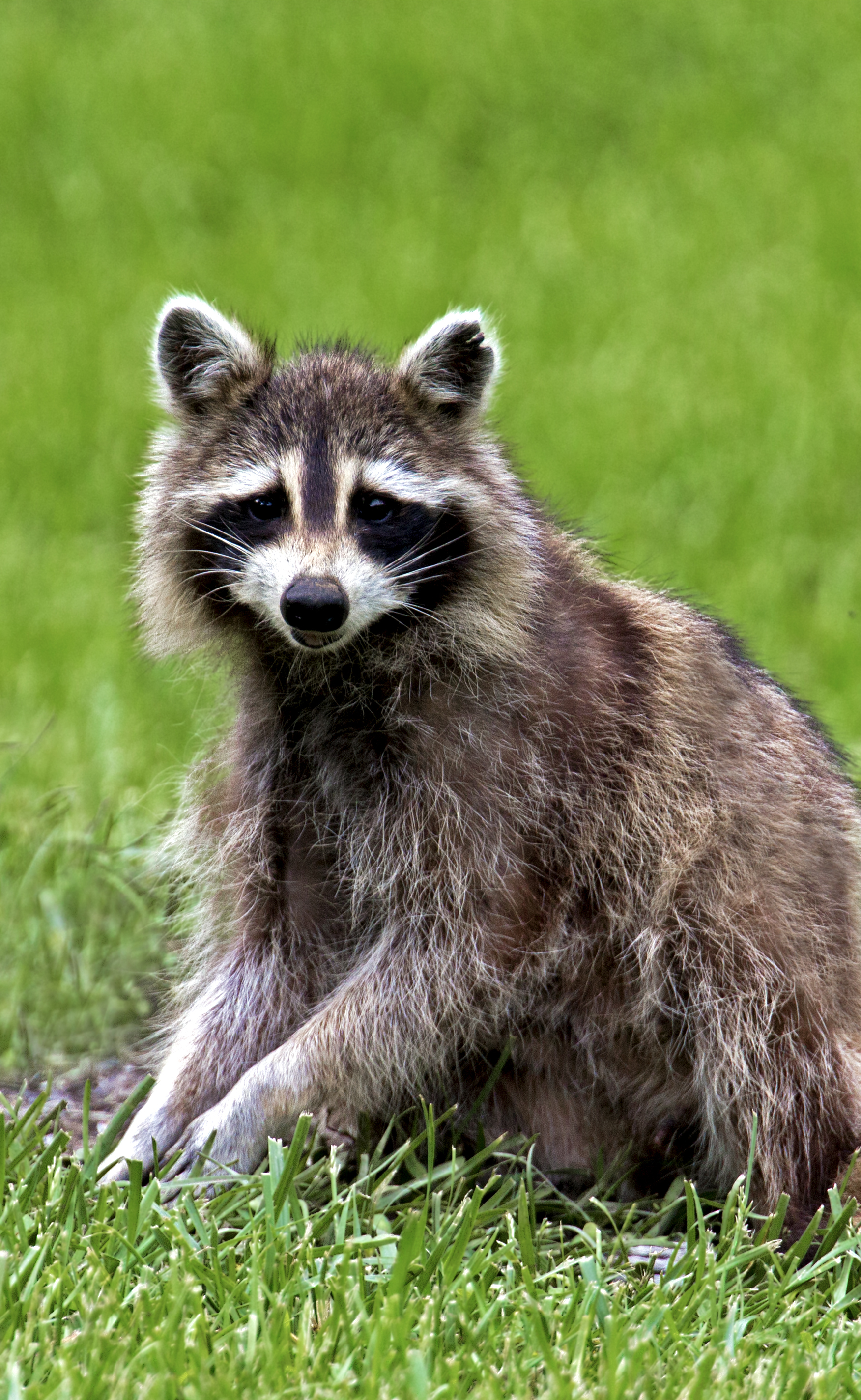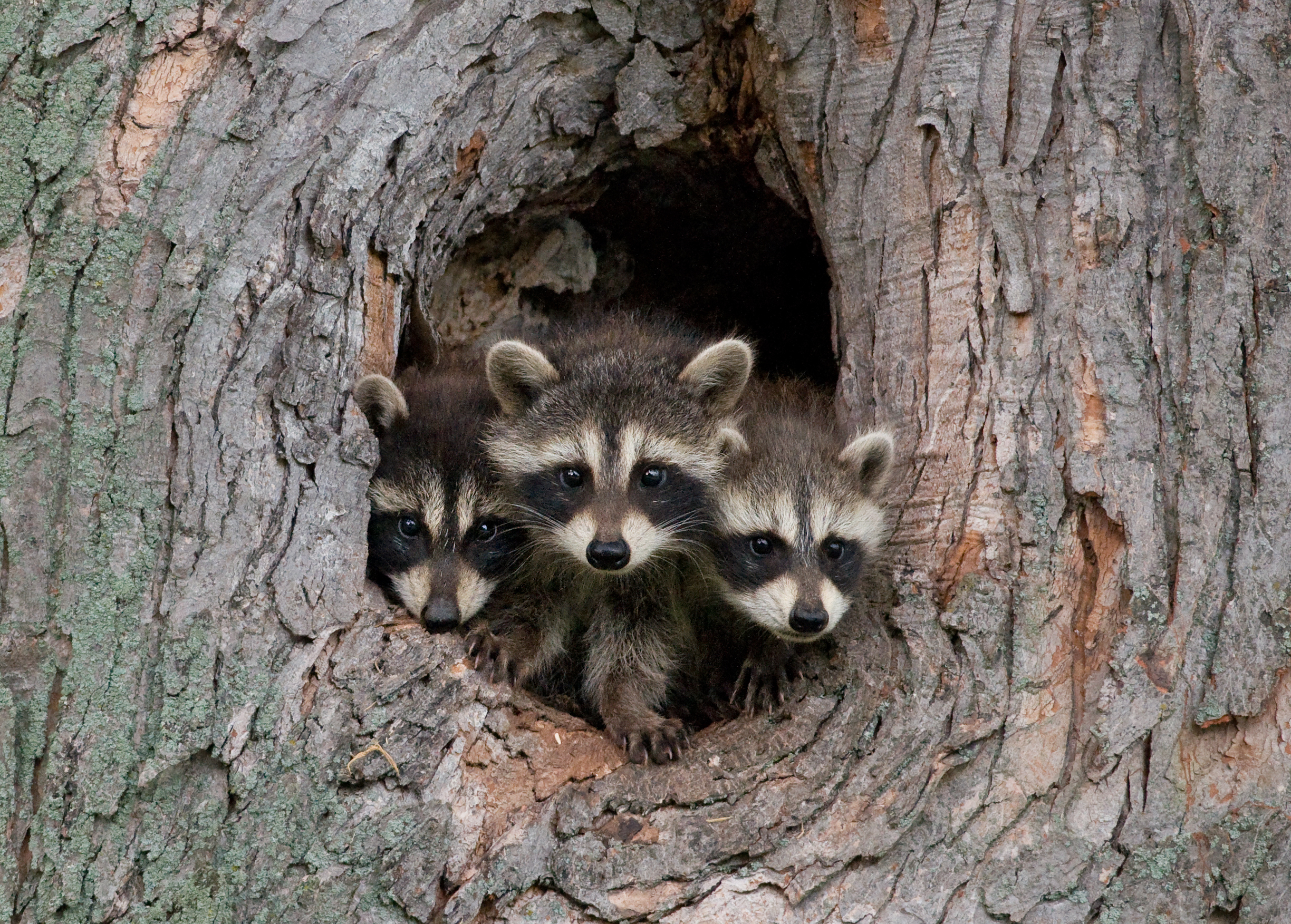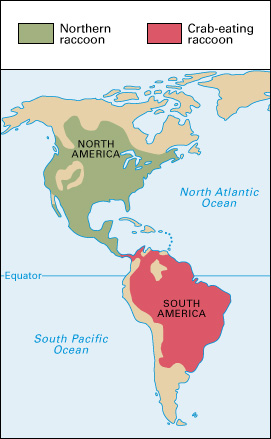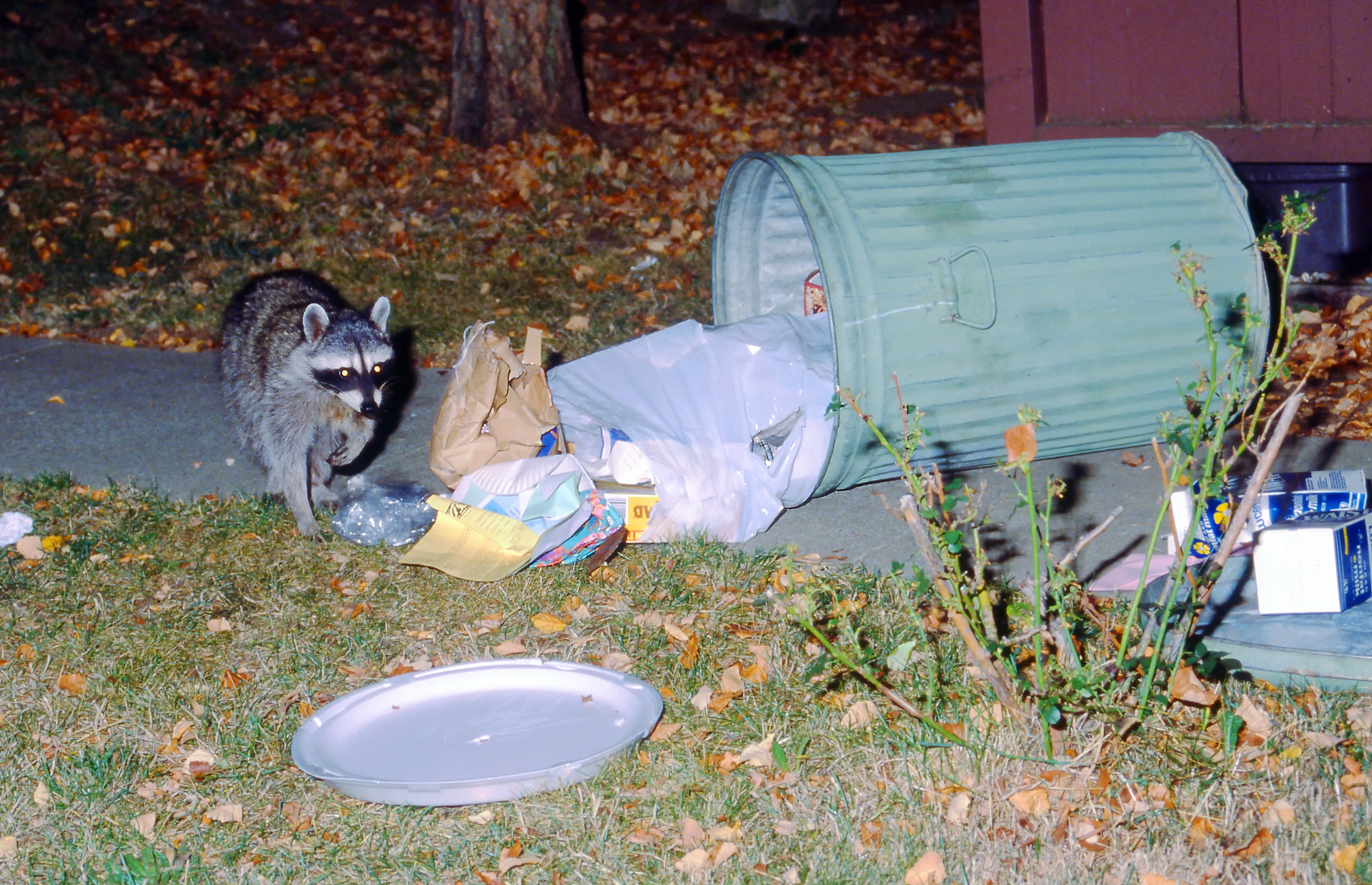Raccoon is a furry animal that has a bushy, ringed tail and a band of black hair around its eyes. This black hair looks like a mask. Raccoons, which are often called coons, belong to the same family as coatis, kinkajous, and ringtails. Raccoons live in North America and South America. There are two main species, the northern raccoon and the crab-eating raccoon. The northern raccoon lives in Canada, the United States, and Central America. The crab-eating raccoon lives in Costa Rica, Panama, and South America. Several kinds of raccoons live on tropical islands.

The body of a raccoon.
The northern raccoon measures from 24 to 42 inches (61 to 107 centimeters) long, including its tail. Most raccoons weigh from 8 to 20 pounds (3.6 to 9 kilograms), though some males may weigh more than 40 pounds (18 kilograms). Male raccoons usually grow larger than females.

A raccoon has coarse, long hair that is generally gray in color, but sometimes tinged with yellow or brown. Northern raccoons and crab-eating raccoons both have pale-brown or gray underfur. But a crab-eating raccoon has shorter hair and thinner underfur.
The tail of both the northern and the crab-eating raccoon may grow as long as 15 inches (38 centimeters). Most raccoon tails have from five to seven rings. Both main species possess a pointed snout and long, flexible fingers. Raccoons have strong, sharp claws, which help them climb. They can handle objects almost as skillfully as monkeys can.
The life of a raccoon.
Raccoons live both on the ground and in trees. They live alone or in small family groups. Each raccoon has a home range. Most raccoons in good habitats (living areas) have home ranges of about 100 to 250 acres (40 to 100 hectares). Adult males may roam up to 10 miles (16 kilometers). Within its home range, the raccoon mates, locates its home, and searches for food. Raccoons usually hunt for food at night and stay in their dens during the day. They walk like bears, with all four feet flat on the ground, and are good swimmers.
Raccoons in captivity may live 15 years or more because they have a constant food supply and are not attacked by enemies. But most raccoons in their natural habitats probably live fewer than 5 years.

Raccoons that inhabit wooded areas have their dens in hollow logs, stumps, or trees. They may also make their homes in abandoned barns or farmhouses. In marshy, treeless areas, raccoons nest in high grass, or they may take over abandoned muskrat dwellings.

Both northern and crab-eating raccoons eat crabs. Their other food includes crayfish, frogs, fish, and other freshwater animals. Raccoons also eat acorns, birds’ eggs, corn, fruit, nuts, seeds, and such small land animals as grasshoppers and mice.
Many people think raccoons “wash” their food because they frequently dunk food in water before eating it. But experiments show that the animals dunk food that is already clean or wet as often as they dunk dirty or dry food. This habit of dunking food in water seems much more common among raccoons in captivity than those in their natural environment. Some scientists say captive raccoons are simply imitating the way they would pull fish or other animals from rivers and streams. For these reasons, scientists do not believe that the animals actually wash their food.
Raccoons in the southern United States and South America remain active the year around. In colder areas of the northern United States and Canada, raccoons sleep for long periods during the winter, but they do not hibernate. During true hibernation, an animal’s heart rate and temperature decrease greatly. On mild winter days, a raccoon may wake up and leave its den to search for food. Raccoons in such colder areas prepare for winter by eating extra food during the fall. They store up a layer of fat under their skin, and this fat keeps them alive during the long winter sleep.
Loading the player...
Northern raccoon
Northern raccoons mate once a year between January and June. About nine weeks after mating, the female has from one to eight babies. Most females give birth to three or four young each year. Newborn raccoons have no mask around their eyes or rings on their tail. Their eyes do not open until about 20 days after birth. The mother raccoon protects her young and does not even let the father near them. The babies stay in the den from 8 to 10 weeks. They then follow their mother when she searches for food. The mother teaches her young to feed and protect themselves. They may stay with her until the beginning of winter, when they find their own dens.
People and raccoons.
Native Americans hunted raccoons for their furs. After the arrival of Dutch, English, and French fur traders, the Native Americans exchanged pelts for guns and other items. North American colonists made the pelts into caps, overcoats, and sleigh robes. They also used the furs as money before paper currency was established. The settlers traded pelts for such items as flour and sugar. During the 1830’s and 1840’s, the Whig Party in the United States used the raccoon as its emblem.

During the 1920’s, long-haired raccoon furs—especially overcoats—again became popular. Today, fashion designers sometimes make coats out of raccoon furs that have had the long hairs plucked out. The pale-brown underfur remaining is called sheared raccoon.
Raccoon hunts remain a favorite sport in some rural areas of North America. People use dogs to chase the animals until the raccoons jump up into trees to escape. Hunters sometimes roast and eat the raccoons that are caught in a hunt.
People can train raccoons easily, and some attempt to keep them as pets. But after raccoons reach the age of about 1 year, they often bite and scratch. Raccoons have also been known to carry rabies.
Raccoons can become a serious nuisance if they break into chicken houses and kill poultry. They also damage corn crops by breaking the stalks of the plant and eating the growing corn.
